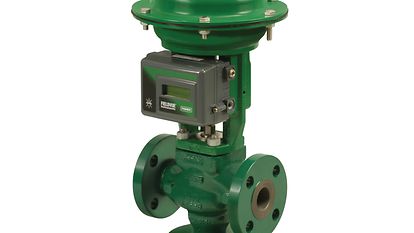Efficient Control Valves: Key Components for Reliable System Administration
Efficient Control Valves: Key Components for Reliable System Administration
Blog Article

Maximize Power Cost Savings and Convenience With Advanced Structure Automation Controls
In the realm of modern architecture and center management, the integration of sophisticated building automation controls stands as an essential development. By harnessing the power of automation, structures can adjust, respond, and progress in ways that were as soon as unimaginable.
Power Efficiency Benefits
Power effectiveness benefits can significantly minimize power usage and functional expenses in structures. Energy-efficient systems, such as innovative structure automation controls, can optimize the use of sources like illumination, cooling, and heating, leading to reduced power expenditures over time.
In addition, improved energy performance can prolong the life expectancy of structure equipment and systems. By operating much more successfully, HVAC systems, lighting fixtures, and various other building elements experience less damage, causing lowered maintenance and replacement costs. In addition, energy-efficient buildings usually regulate greater property worths and rental rates, giving long-term monetary benefits to proprietors.
Furthermore, energy effectiveness can boost owner convenience and productivity. Properly managed interior environments with optimal lights and thermal problems develop an even more favorable and pleasant workspace, resulting in enhanced employee satisfaction and performance. On the whole, the energy performance advantages related to sophisticated building automation controls are complex, incorporating expense savings, environmental stewardship, and passenger health.
Enhanced Comfort Control
Enhancing convenience control in building atmospheres calls for an advanced combination of advanced automation systems for ideal owner well-being. By making use of sophisticated structure automation controls, facilities can tailor the interior setting to satisfy the specific demands and choices of occupants. control valves.
Enhanced comfort control goes beyond fundamental temperature changes. It includes attributes such as personalized setups, tenancy sensing units, and natural light application to develop a receptive and vibrant setting. By including these sophisticated controls, buildings can not just boost convenience but also improve power efficiency by optimizing system procedures based upon real occupancy and usage patterns. Inevitably, prioritizing occupant convenience via advanced automation systems causes a more delightful and much healthier indoor environment.
Functional Efficiency Improvements

Furthermore, the application of real-time tracking and analytics devices makes it possible for building drivers to identify energy inadequacies and operational anomalies quickly. By continually checking energy usage patterns and system efficiency metrics, modifications can be made in real-time to enhance power intake and make certain peak operational efficiency. control valves. Additionally, including demand feedback methods right into structure automation controls can even more enhance functional effectiveness by dynamically adjusting energy usage based upon grid conditions and pricing signals
Indoor Climate Optimization
Reliable interior environment optimization is an essential facet of building automation controls, guaranteeing residents' convenience and wellness while optimizing power financial savings. By utilizing advanced sensors and controls, developing automation systems can constantly check and adjust temperature, humidity levels, air high quality, and air flow to create an ideal indoor atmosphere. Preserving consistent and comfy conditions not just boosts resident contentment however also boosts performance and overall wellness.
Interior climate optimization additionally plays a crucial duty in power performance. By fine-tuning home heating, cooling, and air flow systems based upon real-time information and occupancy patterns, developing automation controls can significantly lower energy usage - control valves. Implementing strategies such as demand-controlled ventilation and thermal zoning can aid decrease power waste while making certain that each location of the structure gets the required conditioning.

Sustainable Atmosphere Development
Building automation regulates not only enhance indoor climate conditions for webpage energy efficiency and passenger convenience but likewise lay the foundation for developing a sustainable environment through calculated monitoring of systems and sources. By incorporating innovative structure automation technologies, such as sensors, actuators, and smart software, facilities can adjust and check power usage in real-time to minimize waste and lower their carbon impact. These systems make it possible for predictive maintenance, determining potential problems before they escalate and optimizing devices performance to improve longevity and effectiveness.
Furthermore, sustainable environment creation prolongs past energy management to include water preservation, waste reduction, and indoor air top quality improvement. Building automation controls can regulate water usage, detect leaks, and make sure appropriate garbage disposal techniques, contributing to overall sustainability efforts. Additionally, by controlling and checking ventilation and filtration systems, these innovations boost resident health and wellness and productivity while reducing power usage connected with heating and cooling procedures.
Conclusion
In final thought, advanced structure automation manages offer considerable benefits in terms of power cost savings, convenience control, functional efficiency, indoor environment optimization, and developing a lasting environment. By executing these controls, structures can achieve optimum efficiency while minimizing energy intake and improving resident convenience. It is evident that making use of advanced automation modern technology is critical in enhancing structure efficiency and creating a more sustainable future.
Energy performance benefits can significantly lower energy usage and functional costs in structures. Generally, the energy effectiveness advantages connected with advanced structure automation controls are complex, incorporating cost financial savings, ecological stewardship, and passenger wellness.
In addition, including need action methods into structure automation controls can even more enhance functional efficiency by dynamically adjusting energy use based on grid problems and prices signals.
Building automation controls not only enhance indoor Visit Website environment problems for energy effectiveness and passenger comfort but likewise lay the structure find here for creating a sustainable atmosphere via strategic management of systems and resources.In verdict, progressed building automation manages offer significant benefits in terms of power savings, comfort control, functional performance, interior climate optimization, and producing a lasting atmosphere.
Report this page